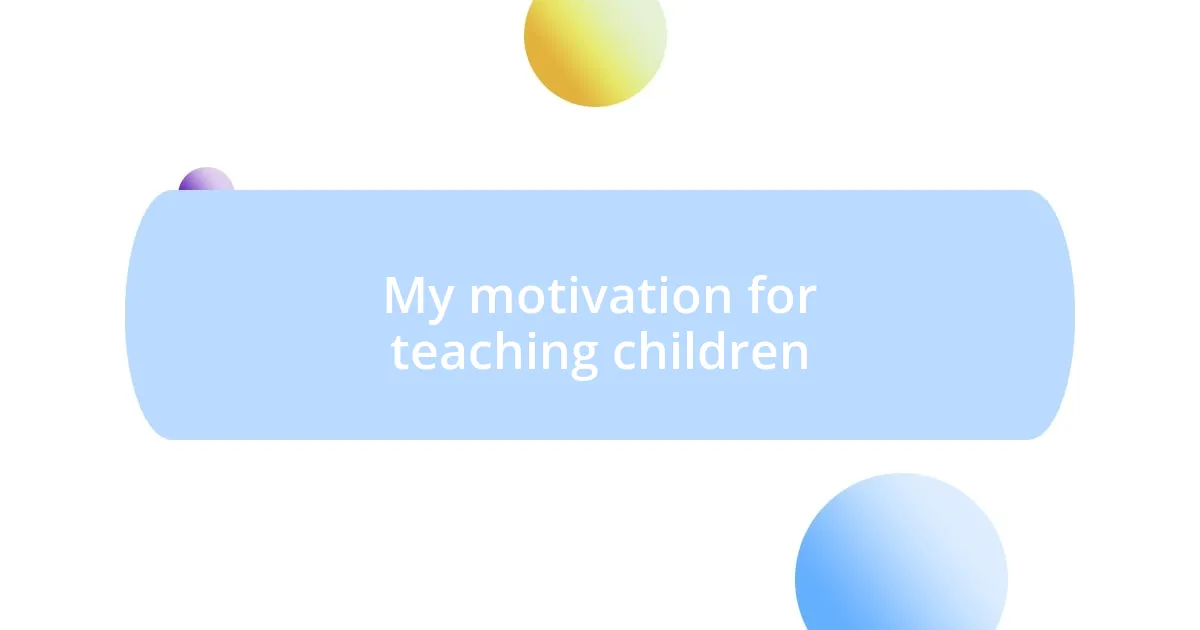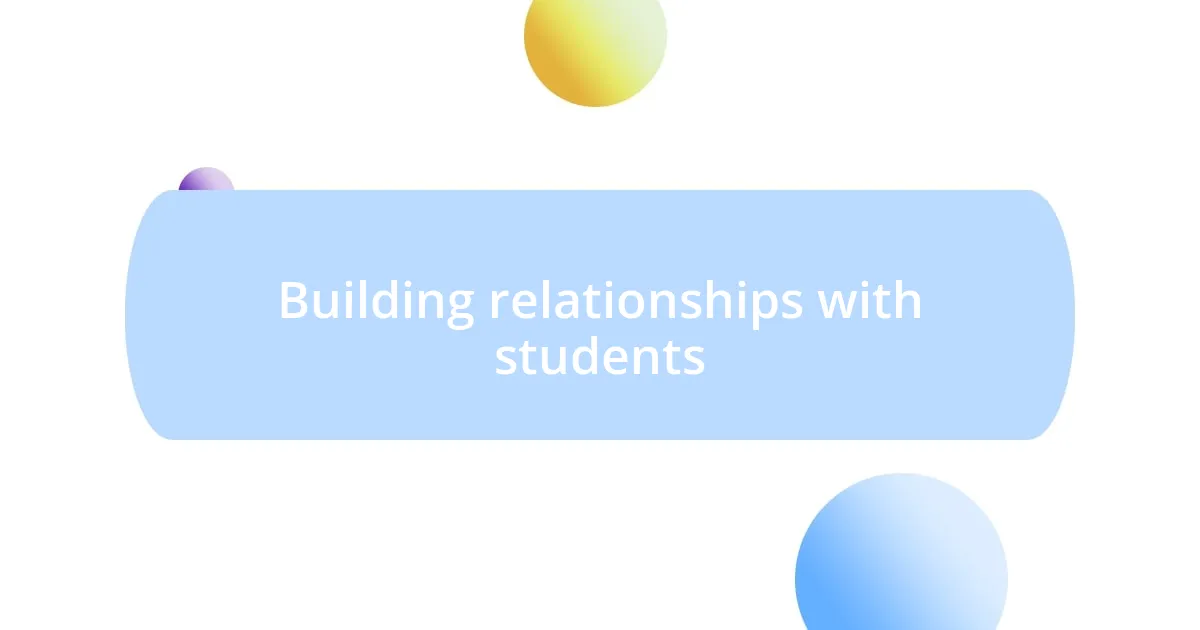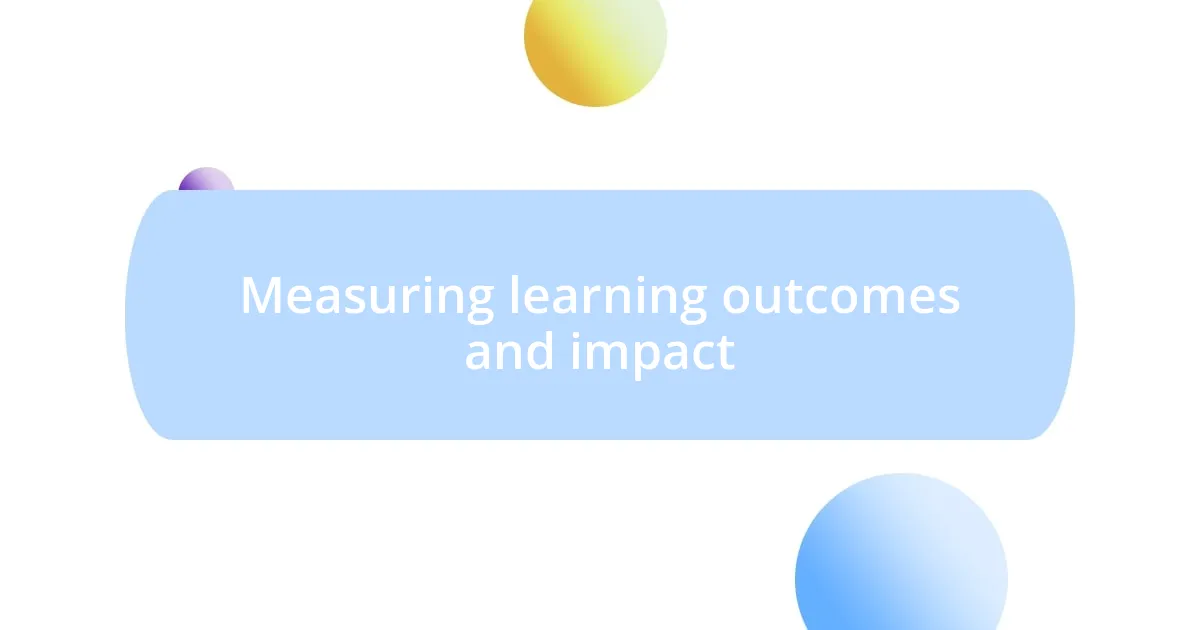Key takeaways:
- The profound impact of small victories in a child’s learning journey fuels a teacher’s passion for education.
- Adapting teaching methods to meet community needs and cultural backgrounds enhances student engagement and understanding.
- Building strong relationships with students through personal interactions fosters confidence and a positive classroom environment.
- Involving parents in the educational process strengthens connections between home and school, enriching student experiences.

My motivation for teaching children
Teaching children has always been a deeply rewarding experience for me. I remember one particular moment when a shy student of mine finally spoke up during class. The joy on their face—and mine—was priceless. It hit me then: it’s those small victories that fuel my passion.
What truly motivates me, however, is the incredible potential each child holds. Have you ever witnessed a child grasp a complex concept for the first time? It’s magical. I find that each lesson not only imparts knowledge but also cultivates a sense of wonder and curiosity.
Reflecting on my teaching journey, I realize that it’s more than just academic growth—it’s about nurturing resilient individuals. I find myself asking, “How can I inspire them to believe in themselves?” This question drives my approach each day, constantly pushing me to create a supportive environment where children feel safe to explore, question, and ultimately thrive.

Understanding local community needs
Understanding the local community needs is crucial in shaping an effective teaching strategy. I’ve noticed how each neighborhood has its unique challenges and strengths. For instance, in one community where I taught, many families struggled with basic literacy, which directly affected the children’s confidence in reading. Recognizing this need helped me tailor my lessons to include fun literacy games that not only engaged the kids but also encouraged parents to participate.
Moreover, the cultural background of my students played a significant role in how I approached each lesson. I remember one instance when a student shared a story from their tradition, and it struck me how valuable it was to integrate these diverse experiences into our classroom discussions. This inclusion not only enhanced their learning but also fostered a sense of pride in their heritage. It reinforced my belief that understanding our community’s cultural landscape can transform education into a more relatable and impactful journey.
I can’t stress enough how vital it is to listen actively to children’s voices. There was a day when I asked my class what they found most challenging. One student mentioned math, and it resonated with others. This simple inquiry led me to introduce collaborative problem-solving activities that turned their struggles into triumphs. By prioritizing their needs, I witnessed a remarkable growth in their confidence and enthusiasm overall.
| Community Need | Teaching Strategy |
|---|---|
| Literacy Challenges | Incorporated literacy games |
| Cultural Background | Inclusive storytelling in lessons |
| Listening to Struggles | Collaborative problem-solving activities |

Building relationships with students
Building strong relationships with students is foundational to effective teaching. I’ve found that spending time getting to know each child personally transforms the classroom dynamic. When I shared my own experiences and passions, it set a tone of openness and connection. One afternoon, after a heartfelt discussion about favorite hobbies, a normally reserved student approached me. With a newfound confidence, they shared their dreams of becoming an artist. Witnessing that shift was a reminder of the power of relationships in education.
Here are some strategies I found helpful in building these connections:
- Personal Check-ins: I always took time to ask students about their day; even small conversations created a bond.
- Shared Experiences: I encouraged students to bring in objects that represented them, fostering discussions and a sense of belonging.
- Being Approachable: By making myself available during breaks, students felt comfortable sharing their thoughts, both academic and personal.
- Celebrating Achievements: I made it a point to celebrate even the smallest victories in class, reinforcing their efforts and boosting their self-esteem.

Adapting teaching methods effectively
Every teaching experience demands flexibility. In one session, I noticed that certain students were disengaged during a math lesson. Instead of sticking rigidly to my plan, I quickly shifted gears and introduced a real-world application of fractions using pizza slices. The classroom erupted in excitement! When I saw their eyes light up, it struck me just how powerful it is to adapt methods on the fly. Can you imagine the difference it makes when the material resonates with their everyday lives?
Recognizing the varying learning styles in the classroom has also shaped how I approach lessons. I recall a particularly insightful moment when a student struggled to grasp a science concept through traditional methods. By providing hands-on experiments—where students could literally see chemical reactions in action—the atmosphere transformed. They were no longer passive learners; they became active participants. It reinforced my belief that teaching isn’t just about delivering content; it’s about finding the right method that ignites curiosity.
I’ve experienced firsthand how adaptation fosters inclusivity. For instance, during a lesson on storytelling, I noticed some students were hesitant to participate verbally. So, I implemented visual storytelling as an alternative, allowing them to express their ideas through drawings. This change not only empowered those quieter voices but also created a vibrant, collaborative environment in the classroom. Reflecting on this, I often wonder: how bold are we in changing our approach to meet our students where they are?

Incorporating local culture in lessons
Incorporating local culture into lessons has been one of the most enriching aspects of my teaching journey. For instance, during a history lesson, I invited local elders to share stories about their traditional customs. The students listened with wide eyes, and I could see the pride swell in them as they recognized their heritage reflected in these narratives. It made me realize how powerful it is to connect academic content with real-life experiences that resonate deeply with the children’s backgrounds.
One day, I decided to host a cultural day where students brought in traditional foods from their families. Not only did this event delight their taste buds, but it also sparked conversations about recipes and family traditions. As we shared each dish, students spoke with enthusiasm about their cultural significance. I found myself immersed in their stories; it reminded me of the warmth that comes from embracing our differences. How often do we allow the richness of local culture to permeate our curriculum and create a sense of unity?
In another instance, while teaching a science lesson, I intertwined local environmental issues, like the nearby river’s health, into the discussion. I took the students on a field trip to observe the river, encouraging them to observe and discuss its condition. This hands-on experience connected them to their community and sparked a lively debate about conservation efforts. Reflecting on that day, I couldn’t help but feel a deep sense of fulfillment knowing that we weren’t just learning about science; we were cultivating environmentally aware citizens who cared about their community. Isn’t that the ultimate goal of education?

Engaging parents in the process
Engaging parents in the educational process has been a game changer for my teaching. I vividly remember a parent-teacher night where I set up a small workshop. Parents participated in activities that mirrored what their children were learning in class. The energy was palpable as they got to see firsthand the laughter and creativity their kids brought to these ‘lessons.’ This approach not only fostered enthusiasm but also opened the door for ongoing conversations at home. Have you ever noticed how sharing experiences can strengthen a community?
In another instance, I initiated a monthly newsletter to keep parents updated on our lessons and share tips on supporting their child’s learning at home. One day, a father reached out to me, thanking me for the suggestion to read together for just 10 minutes a day. He said it transformed his evenings, creating special moments he now cherishes. It struck me then how a simple communication tool can build bridges between school and home, reinforcing the notion that we are all in this together. How often do we consider the impact of just a few thoughtful words?
Finally, hosting open classes where parents could observe and even participate created a real buzz. I recall one particular session where a parent, who was an artist, showcased some artistic techniques that tied into our lesson on colors. The kids loved having their parents involved, and it sparked newfound inspiration. I can’t help but think—when we invite parents in, do we realize how much richer our classroom experiences can become?

Measuring learning outcomes and impact
Measuring the learning outcomes and impact of my teaching has often required a keen eye for observation. During one lesson on mathematics, I noticed a student who usually struggled with numbers begin to grasp concepts through hands-on activities. As I witnessed their confidence grow, it became clear how important it is to assess not just scores but the joy of discovery in learning. Have you ever seen that spark in a child’s eyes when they finally understand something?
I’ve also found that soliciting feedback from students serves as a valuable tool in assessing their progress. After a science experiment, I encouraged my students to share their thoughts and feelings about the activity. One child mentioned how excited they were to see their hypothesis come to life. That moment made me realize that learning is not solely about the answers but also about the excitement of the journey. How often do we overlook the emotional responses that highlight a student’s engagement and understanding?
To further measure our impact, I implemented reflective journals where students could express what they learned each week. One day, a student wrote they felt like a scientist after our recent exploration of local ecosystems. Their words turned my heart to mush, showing me that learning often transcends traditional assessments. Are we not aiming to inspire a lifelong love for knowledge rather than just perfect grades? I believe these moments are what truly reveal the effectiveness of our teaching.














